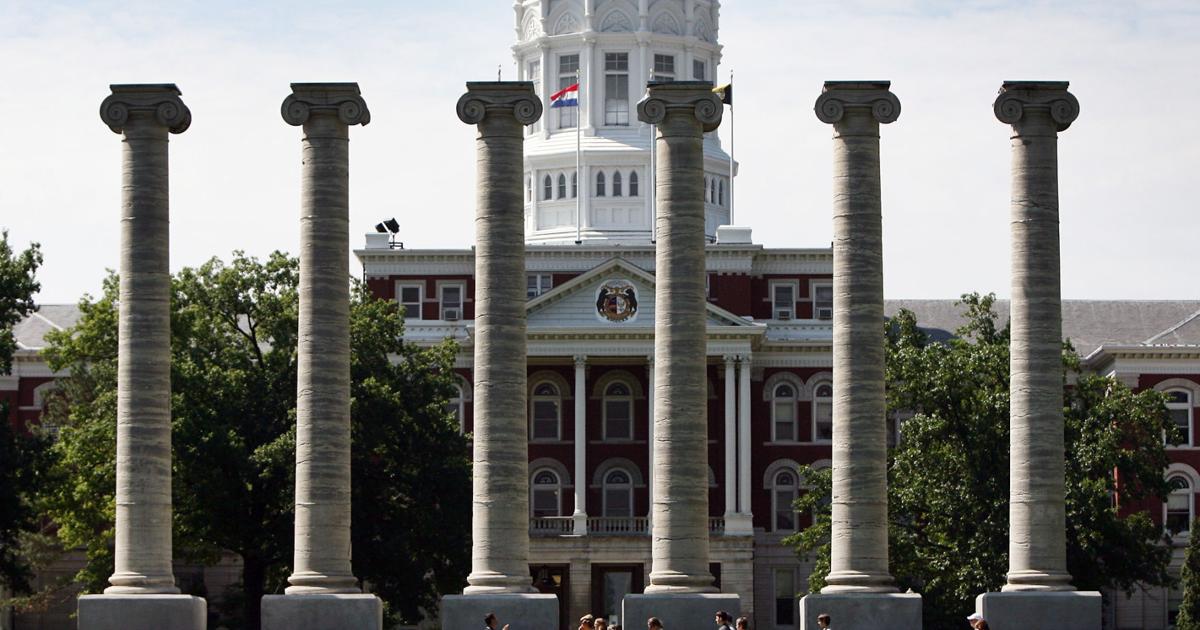
Get local news delivered to your inbox!
E-edition PLUS unlimited articles & videos
Personalized news alerts with our mobile app
*FREE access to newspapers.com archives
Hundreds of games, puzzles & comics online
*Refers to the latest 2 years of stltoday.com stories. Cancel anytime.
Metro columnist
{{description}}
Email notifications are only sent once a day, and only if there are new matching items.
As the names and scholarships flashed across the screen, two words kept drawing my attention: Bright Flight.
That’s the name of the Missouri higher education scholarship my daughter and other Lafayette High School seniors earned. It was senior awards night in the high school gymnasium, and students finishing their K-12 education were being honored for various accomplishments.
My thoughts turned to Ken Jacob. This is an occupational hazard that often annoys my wife. We’ll be at an event and my attention will seem to shift elsewhere, with my face glazed over as I ponder an idea that popped into my head. She’ll poke me and ask: “You’re writing a column, aren’t you?”
So it often is. Back to Ken Jacob.
In 1986, he was a Democratic state representative from Columbia, home of the University of Missouri. University leaders were worried about a trend: many of the highest-performing high school students in Missouri were heading out of state for college.
The “Bright Flight” scholarship was created to counter that trend. At its inception, it awarded up to $2,000 to the top 3% of Missouri graduating seniors, based on ACT or SAT scores.
When Jacob’s bill was passed, and signed by Gov. John Ashcroft, a Republican, it had an immediate impact. In 1985, the year before the bill was passed, about two-thirds of the state’s highest-performing students left Missouri for college. In 1987, the first year the Bright Flight scholarships were awarded, 62% of those students chose to stay in the state.
But back then, tuition at any of the in-state public schools in Missouri was less than $2,000. The scholarship covered the full cost of tuition. In the nearly four decades since, state support for higher education in Missouri, as a percentage of the overall state budget, has gone down. And tuition has gone sky high.
In 1990, for instance, just four years after the Bright Flight bill was passed, the University of Missouri-Columbia received 70% of its funding from the state. The student share of revenue, measured by tuition, was 27%. In the decades since, those numbers have flipped. In 2022, tuition made up 62% of the university’s revenue; state funding was only 30%.
This isn’t just a Missouri problem. Nationally, the “student share” of the cost of higher education doubled from 20% to 40% between 1980 and 2023. Unfortunately, Missouri’s historically poor per-capita support for higher education — between 47th and 49th in the nation, depending on who’s doing the counting — makes the problem worse than in other states.
What that means in practice is that all of Missouri’s scholarship programs, those for academics and those for financial need, don’t produce nearly as much bang for the buck as they used to. Bright Flight, Access Missouri and the A+ program all suffer from underfunding, meaning the promises made when the Missouri Legislature created those programs are no longer fulfilled.
A year ago, Fred Hall, a former curator at Mizzou, called me to lament the situation.
“Government should be the great equalizer by giving those with fewer resources equal opportunity,” Hall said. “Instead, low funding with higher tuition means a denial to those who currently have dreams but no means.”
Every year, the Republicans who control the General Assembly seem to celebrate minor bumps in higher education funding while also talking about further diminishing the state’s tax base, so that there will never be an opportunity to reverse Missouri’s race to the bottom.
A Bright Flight scholarship that once covered full tuition at a state university now offers up to $1,000 for students like my daughter, which is less than 10% of the yearly tuition at a state institution. Mizzou now costs more than $14,000 a year for a full-time student (not including housing expenses) — while the state’s scholarship program is stuck in 1986.
It’s no wonder that student debt in the past two decades has more than doubled, with parents and students owing more than $1.6 trillion because loans are the only way many people can fund higher education.
As I sat in the gymnasium applauding the accomplishments of my daughter and her friends, many of whom will attend college out of state, I took a break from the parental pride to lament Missouri’s new reality. Bright Flight has become just two words on a screen rather than a promise made from one generation to the next.
To comply with Trump’s orders to end DEI, colleges began removing programs. Including scholarships, in admissions and graduation ceremonies.
Get local news delivered to your inbox!
Metro columnist
{{description}}
Email notifications are only sent once a day, and only if there are new matching items.
The St. Louis County Library system has hired six social workers to move among its 20 branches. It plans to add more.
In Missouri’s Peaceful Village, democracy has won out. But one man is still trying to protect his property rights.
“We are a country of laws. There are rules to revoking visas.”
Cases are getting backed up in Missouri, and judges are punishing the state.
Get up-to-the-minute news sent straight to your device.

Recent Comments